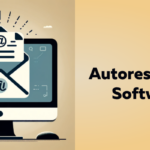In the dynamic realm of digital marketing, pay-per-click (PPC) advertising remains a potent tool for businesses to efficiently reach their target audience. Bing Ads and Google Ads stand out as major players in the PPC landscape, offering opportunities to showcase ads on search engine results pages (SERPs) and various websites. Deciding which platform suits your business necessitates a careful examination of their disparities and an evaluation of your specific objectives.
Google Ads, previously known as AdWords, is Google’s brainchild and a prominent online advertising platform where businesses pay to display concise ads, service offerings, product listings, and video content across the Google ad network. With its extensive reach, Google Ads ensures ads appear on search results, partner websites, apps, and even YouTube videos.
In contrast, Microsoft Bing Ads provides a notable alternative. Functioning similarly to Google Ads, Microsoft Ads displays ads on the Bing search engine and partner networks. A distinct advantage lies in Bing Ads often having a lower cost per click (CPC), making it appealing to budget-conscious businesses.
Here, we explore the key differences between Bing Ads and Google Ads to assist you in making an informed decision:
Market Share:
Google Ads commands over 90% of the PPC market, offering extensive reach but resulting in intense competition and higher CPCs.
Bing Ads, with a smaller market share, present a viable option for businesses targeting a niche audience, often translating to lower CPCs.
Audience Demographics:
Google Ads attracts a younger, more affluent audience.
Bing Ads users lean towards the business-to-business (B2B) sector, making it valuable for businesses targeting professionals and decision-makers.
Cost per Click (CPC):
Bing Ads typically offers lower CPCs compared to Google Ads, primarily due to reduced competition.
Features:
Google Ads provides extensive options for audience targeting based on interests and demographics.
Bing Ads excels in targeting audiences based on devices and geographic locations.
Ultimately, the choice between Microsoft Ads and Google Ads depends on your business goals, target audience, and budget considerations.
Is Bing Advertising Worth it?
In the realm of digital advertising, Bing Ads, now known as Microsoft Ads, deserves your attention. Here’s why:
Less Competition: Bing Advertising offers a respite from Google’s fierce competition. With a dedicated user base, it often means lower CPCs and less keyword bidding intensity.
Unique Audience: Bing’s users are typically older and more affluent, making it a prime platform for businesses targeting this demographic.
Cost-Efficient: Lower CPCs make Bing Ads budget-friendly, and ideal for maximizing ROI.
Microsoft Integration: Seamlessly connects with Microsoft products like Office and LinkedIn, opening doors to professional networks and decision-makers.
Ad Variety: Support for diverse ad formats lets you experiment and find the best fit for your audience.
Geographic Precision: Precise geographic targeting is perfect for region-focused businesses.
Data-Driven Insights: Robust reporting and analytics tools empower you to refine campaigns and boost performance.
Intrigued? Bing Advertising could be the missing piece for your business’s digital marketing puzzle.
Which Platform is Right for You?
Choosing between Microsoft Ads and Google Ads ultimately hinges on your unique business goals and needs:
If you seek the largest possible audience and are willing to contend with higher CPCs, Google Ads is likely the better choice.
If budget constraints are a concern, and you’re targeting a specific audience, Microsoft Ads can offer a cost-effective alternative.
Consider your business objectives. If you aim to generate website traffic, Google Ads is the go-to option. For lead generation or sales, exploring both platforms may be advantageous.

Tips for Selecting the Right PPC Platform

When deciding on the ideal PPC platform for your business, consider the following factors:
Budget: Thoroughly evaluate your budget. While Google Ads often involves higher CPCs, it offers access to a larger and potentially more valuable audience. Target Audience: Let the characteristics of your target audience guide your decision. If you are focusing on a specific demographic, Microsoft Ads might be the more suitable choice.
Business Goals: Consider your primary objectives, whether it’s increasing website traffic, generating leads, or boosting sales. Each platform has its own strengths, aligning with different business goals.
PPC Management Tools: Explore PPC management tools that can assist with essential tasks like keyword research, bidding, and reporting. Leveraging these tools can streamline your campaigns and enhance overall efficiency.
Marketing on Bing can be a strategic move to diversify your digital advertising strategy and reach a distinct audience. Here’s a concise guide to help you get started:
Create a Microsoft Ads Account: Set up an account on the Microsoft Ads platform by providing basic business information and payment details.
Keyword Research: Conduct comprehensive keyword research using Microsoft Ads’ tools to identify relevant search terms potential customers might use.
Build Compelling Ads: Craft engaging ad copy that highlights your business’s unique value. Keep it concise, use compelling language, and incorporate relevant keywords.
Define Your Target Audience: Utilize Microsoft Ads’ audience targeting options to reach your ideal customers based on demographics, interests, location, and more.
Set Your Budget: Determine your daily or monthly budget for Microsoft Ads campaigns. Set bid amounts for specific keywords to control costs.
Monitor and Optimize: Use Microsoft Ads’ reporting and analytics tools to closely monitor campaign performance. Adjust bids, ad copy, and targeting settings as needed for improvement.
Experiment with Ad Formats: Bing Ads supports various ad formats, including text, image, and video ads. Test different formats to identify the most effective ones for your audience.
Leverage Microsoft Products: Integrate your ads with Microsoft’s ecosystem, including products like Microsoft Office and LinkedIn, for broader reach.
Geographic Targeting: If your business operates in specific regions, use Microsoft Ads’ geographic targeting features to focus your advertising efforts strategically.
A/B Testing: Test different ad variations through A/B testing to refine messaging and improve conversion rates.
Remarketing: Implement remarketing campaigns to re-engage with visitors who have previously interacted with your website or ads.
Regularly Review and Adjust: Keep campaigns fresh and effective by regularly reviewing strategies and making adjustments based on performance data.
By following these steps and continually optimizing your campaigns, marketing on Bing (Microsoft Ads) can be a valuable addition to your digital marketing efforts, allowing you to tap into a unique audience and achieve your marketing goals effectively.
Determining whether Bing Ads surpass Google Ads is a common query in the digital advertising sphere. The answer is nuanced and contingent on your specific goals and target audience. Let’s delve into the advantages and disadvantages to facilitate an informed decision:
Pros of Bing Ads
Lower Competition: Bing Ads generally encounter less competition than Google Ads, leading to potentially lower Costs Per Click (CPC) and a more budget-friendly advertising approach.
Distinct Audience: Bing’s user base tends to be slightly older and more affluent, making it an appealing option for businesses targeting this demographic.
Cost Efficiency: The lower CPCs on Bing can optimize your advertising budget, offering the potential for improved Return on Investment (ROI).
Microsoft Integration: Bing Ads seamlessly integrate with Microsoft products such as Office and LinkedIn, providing unique opportunities to connect with professional networks and decision-makers.
Geographic Precision: Precise geographic targeting options are advantageous for businesses focusing on regional or local markets.
Cons of Bing Ads
Smaller Audience: Despite having a dedicated user base, Bing lags behind Google in overall market share, resulting in a smaller potential audience.
Lower Traffic Volume: Due to the smaller user base, Bing Ads typically generate less traffic compared to Google Ads.
Less Advanced Features: Google Ads often leads in terms of innovative features and targeting options, making it more suitable for advanced advertising strategies.
The decision between Bing Ads and Google Ads relies on your specific objectives and target audience. Opt for Bing Ads if you seek reduced competition, cost efficiency, and an older, affluent audience. However, if access to a larger, diverse audience and advanced features is crucial, Google Ads remains the dominant choice.
Conclusion
Bing Ads and Google Ads are both potent PPC platforms, each with unique strengths and audience demographics. The optimal choice for your business depends on your specific goals. Consider a comprehensive approach that may involve a combination of both platforms. Conduct thorough research, assess your budget and audience, and run test campaigns to determine which platform aligns better with your advertising objectives. Tailor your strategy to each platform’s strengths and weaknesses, and with careful consideration, you can create a successful PPC campaign that maximizes your return on investment
















